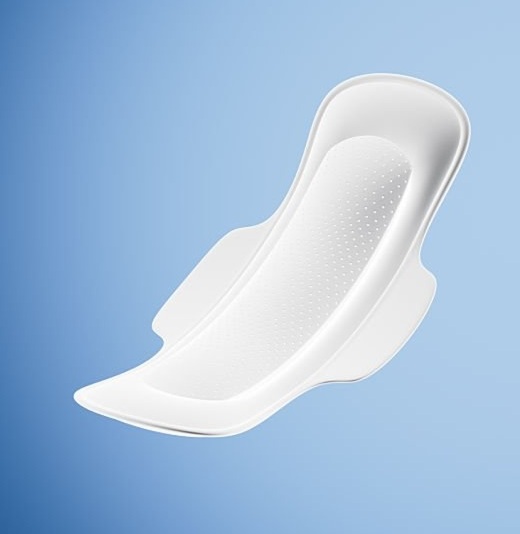
A sanitary napkin consists of multiple layers designed to keep the user dry and comfortable while absorbing menstrual fluid. The core layers handle absorption and distribution, while the outer layers focus on comfort, leak protection, and securing the pad in place.
The top sheet is the layer that comes into direct contact with the skin.
Acquisition and distribution layer (ADL).
This optional, but common, layer sits just beneath the top sheet.
Absorbent core.
This is the heart of the pad, responsible for trapping and retaining fluid.
Backsheet (leak-proof layer)
The backsheet is the pad's final barrier against leaks.
Adhesive layer and release paper
These components are critical for keeping the pad in place during use.
Wings
Found on many types of pads, wings provide extra security and side-leak protection..
Key Features: